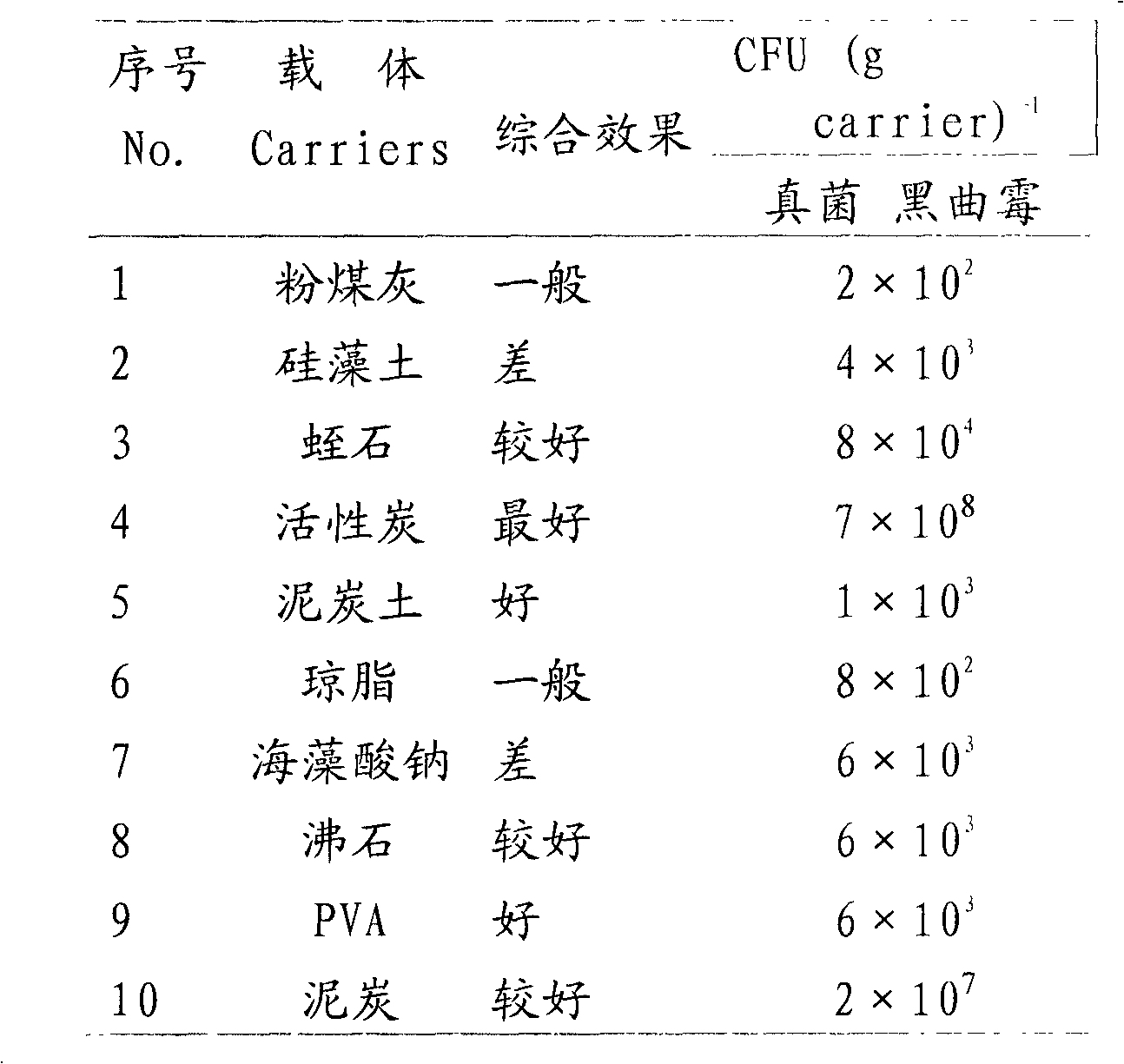Method for treatment of organophosphorus pesticide wastewater by immobilized microorganisms
A technology for organophosphorus pesticides and wastewater, applied in chemical instruments and methods, biological water/sewage treatment, water/sludge/sewage treatment, etc., can solve the problems that have not yet been achieved, and achieve simple methods, good mechanical properties, and low prices Effect
- Summary
- Abstract
- Description
- Claims
- Application Information
AI Technical Summary
Problems solved by technology
Method used
Image
Examples
Embodiment Construction
[0035] Screen and domesticate a number of highly efficient degrading bacteria, among which the fungus Aspergillus niger is the best. Three kinds of microbial immobilization methods were used to test, and finally it was determined that activated carbon was the immobilized material, and the adsorption method was used to immobilize Aspergillus niger, which was used to treat organic phosphorus pesticide production wastewater with good results. Significantly reduce the COD of wastewater effluent cr And TOC, recycling pesticide wastewater.
PUM
 Login to View More
Login to View More Abstract
Description
Claims
Application Information
 Login to View More
Login to View More - R&D
- Intellectual Property
- Life Sciences
- Materials
- Tech Scout
- Unparalleled Data Quality
- Higher Quality Content
- 60% Fewer Hallucinations
Browse by: Latest US Patents, China's latest patents, Technical Efficacy Thesaurus, Application Domain, Technology Topic, Popular Technical Reports.
© 2025 PatSnap. All rights reserved.Legal|Privacy policy|Modern Slavery Act Transparency Statement|Sitemap|About US| Contact US: help@patsnap.com

